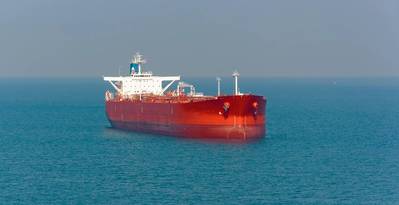Middle East Oil & Gas Shipping Routes are at Risk
Saudi Arabia said on Thursday it was suspending oil shipments through the Red Sea after Yemen's Iran-aligned Houthis attacked two crude tankers, underscoring risks caused by the conflict in the world's top oil exporting region.
Iran, in its row with the United States over sanctions, has also threatened to block the Strait of Hormuz, the other major strategic shipping route for oil from the region and the main route for Iranian crude exports.
Below are facts about region's shipping routes:
Bab al-Mandeb
Any move to block the Bab al-Mandeb, the narrow waterway between the coasts of Yemen and Africa at the southern end of the Red Sea, would virtually halt oil shipments through Egypt's Suez Canal or the SUMED crude pipeline that link the Red Sea and Mediterranean.
The SUMED pipeline, with capacity for 2.34 million bpd, runs roughly parallel to the Suez Canal and can be used by oil tankers that cannot navigate the canal waterway.
An estimated 4.8 million barrels per day (bpd) of crude oil and refined petroleum products flowed through the strait in 2016 to Europe, the United States and Asia, according to the U.S. Energy Information Administration (EIA).
Reuters data shows Saudi crude exports through Bab al-Mandeb, which is about 18 miles (29 km) wide at its narrowest point between Djibouti's coast and the Yemeni mainland, are estimated to be 500,000-700,000 bpd.
Closing the strait, which has a shipping channel just two miles (3.2 km) wide, would force oil and liquefied natural gas (LNG) tankers around the southern tip of Africa, extending the distance for a vessel travelling between Saudi Arabia and the United States by 2,700 miles (4,300 km).
This would add weeks to the journey time and extra costs, although Saudi Arabia could export its crude along that route on non-Saudi vessels.
Strait of Hormuz
About 18.5 million bpd of oil or more than 30 percent of seaborne traded crude was transported in 2016 through the Strait of Hormuz, making the waterway at the southern end of the Gulf the most important oil transit channel in the world, according to U.S. EIA figures.
The strait, which is about 33 miles (54 km) wide at its narrowest point, separates the Arabian Peninsula from Iran.
Most of the crude exported from Saudi Arabia, Iran, the United Arab Emirates, Kuwait and Iraq must slip through a four mile (6.4 km) wide channel between the Omani and Iranian coasts.
More than 85 percent of the crude oil that moves through it is sent to Asia, mainly Japan, India, South Korea and China.
In addition, LNG tankers from Qatar, the world's biggest LNG exporter, pass through the strait.
The U.S. Fifth Fleet, based in Bahrain and responsible for an area that includes the Gulf, Red Sea, Gulf of Oman and parts of the Indian Ocean, has said it would not allow any disruption of traffic through the strait.
Saudi Arabia and the UAE have pipelines that can transport their crude without passing through the strait. The UAE can ship crude from it Indian Ocean coastline, while Saudi Arabia's alternative route runs to its Red Sea port of Yanbu.
Saudi Arabia
Most oil exports from Saudi Arabia, the world's biggest crude exporter which produces about 10 million bpd, are transported by ship through the Strait of Hormuz.
In addition, the East-West Pipeline, known as Petroline, mainly transports crude from the kingdom's eastern fields to Yanbu, which lies north of Bab al-Mandeb so shipments could avoid that Red Sea shipping chokepoint.
The Petroline has capacity to transport about 5 million bpd of the kingdom's oil exports that can reach 8 million bpd.
Saudi Arabia has a parallel 290,000 bpd Abqaiq-Yanbu natural gas liquids (NGL) pipeline linking gas processing plants in the east with NGL export facilities at Yanbu. It also provides only a partial alternative to Saudi shipments of NGL from the Gulf.
State oil giant Saudi Aramco plans to launch its overhauled Muajjiz oil terminal on the Red Sea this year, lifting its total loading and export capacity to as much as 15 million bpd.
Located on the Red Sea, Muajjiz had been used as an export terminal for Iraqi crude through the Iraqi Pipeline in Saudi Arabia (IPSA), but it has not carried Iraqi crude since Saddam Hussein invaded Kuwait in 1990.
Other Gulf Producers
Other OPEC members in the region, Iran, the UAE, Kuwait and Qatar, rely almost entirely on the Strait of Hormuz.
A Kuwaiti official said 90 percent of Kuwaiti oil shipments go to Asia and do not pass through Bab al-Mandeb. The remaining 10 percent of its shipments passing through the Red Sea chokepoint were mostly refined products.
The UAE has built a new pipeline, the Abu Dhabi Crude Oil Pipeline with a capacity of 1.5 million bpd, to carry the bulk of its production to Fujairah, a bunkering hub and oil terminal on the Indian Ocean, bypassing the Strait of Hormuz.
Qatar, a small crude exporter, shipped about 3.7 trillion cubic feet (tcf) per year of LNG through the Strait of Hormuz in 2013, according to BP Statistics.
Iraq
Nearly 80 percent of Iraq's crude is exported through Gulf ports and through the Strait of Hormuz. Most of it heads to Asia.
Iran
Iran's total reliance on crude exports through the Strait of Hormuz is one of the reasons why it is unlikely to be blocked.
Sources: U.S. EIA, Saudi Aramco World, BP Statistical Review, Reuters News, Sumed website, IEA.
(Reporting by Rania El Gamal Additional reporting by Amanda Cooper Editing by Edmund Blair)

